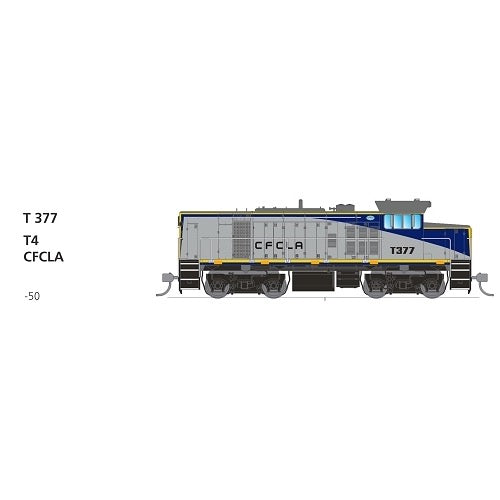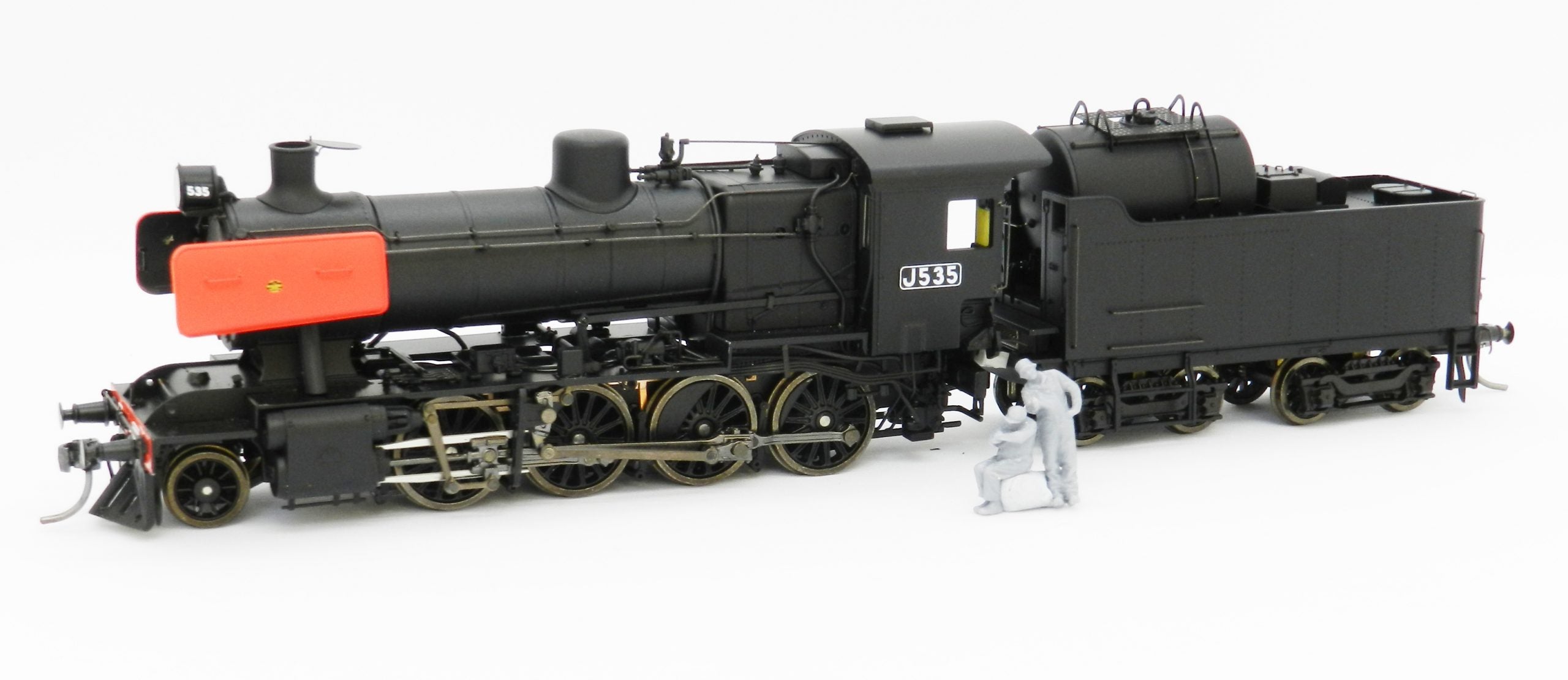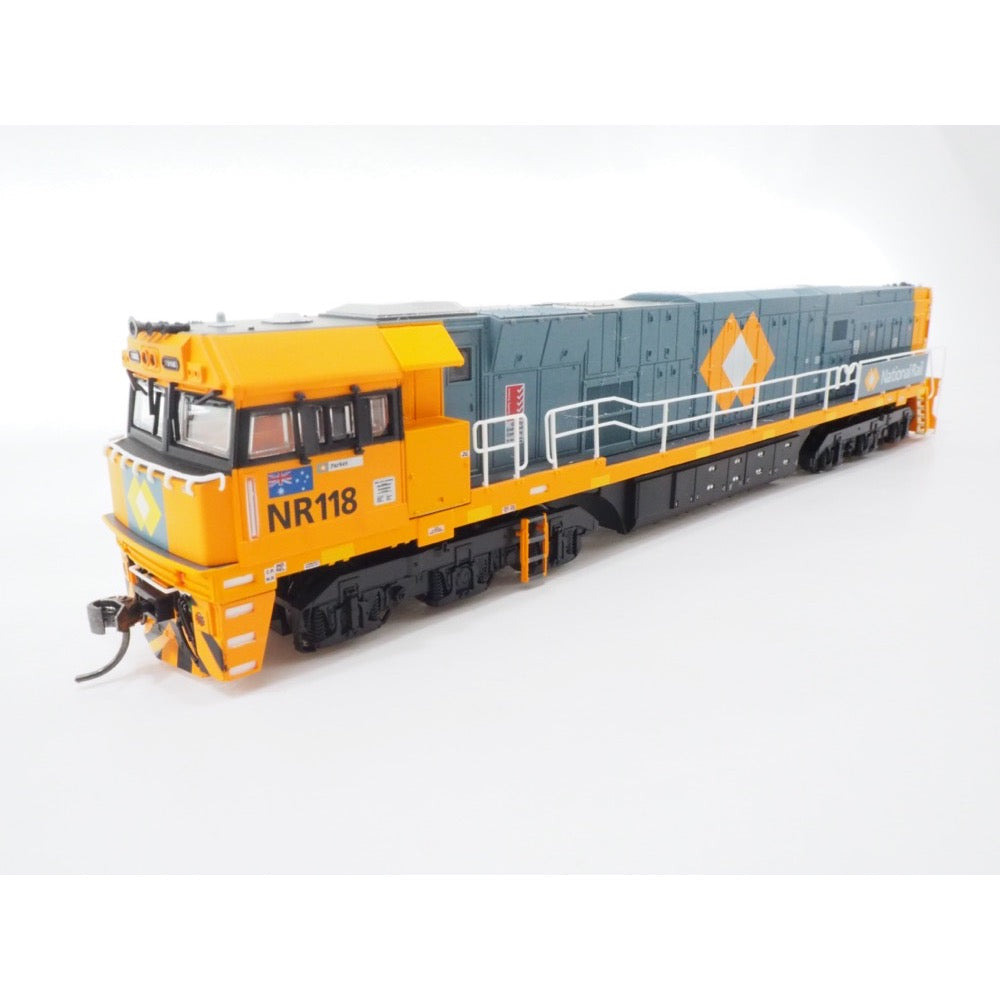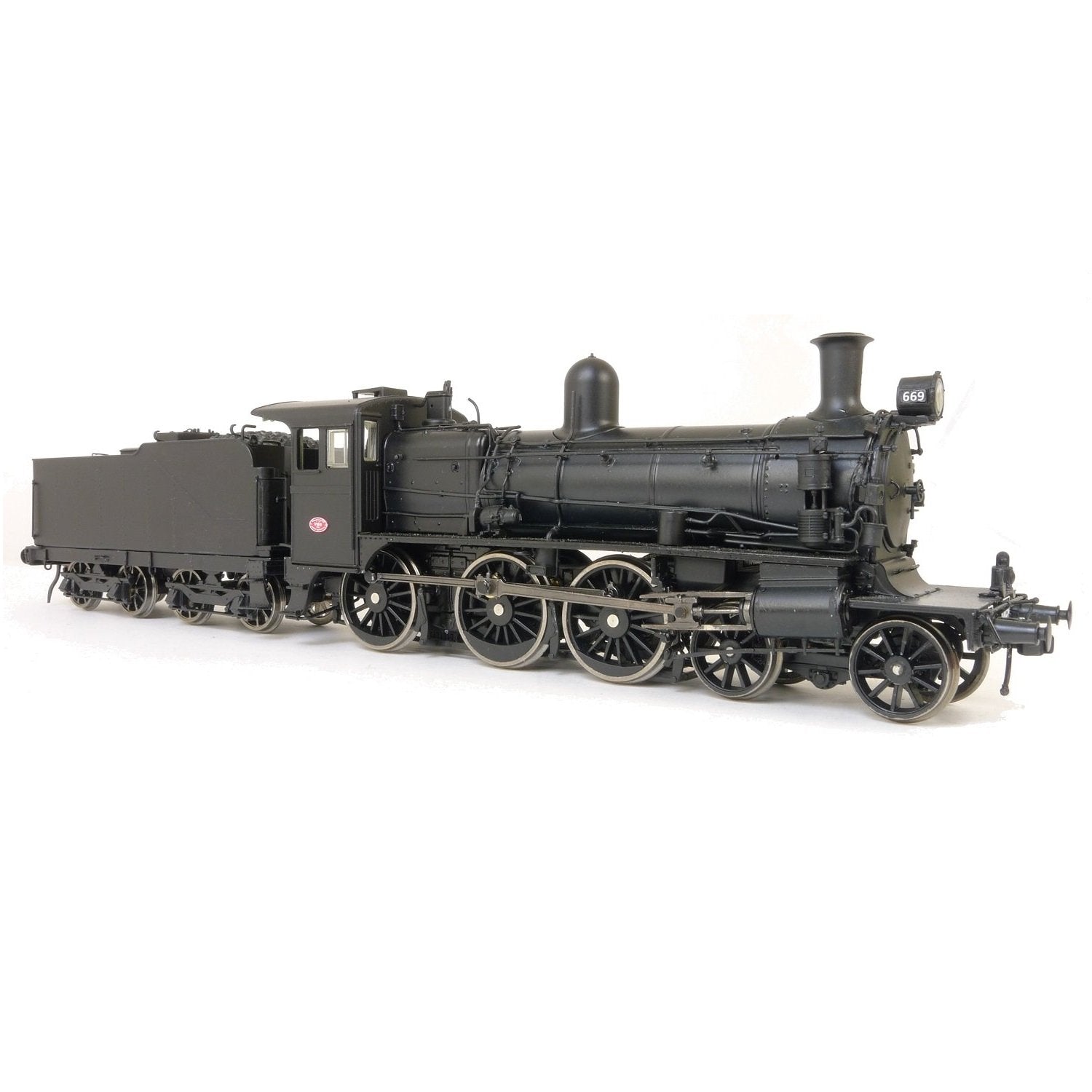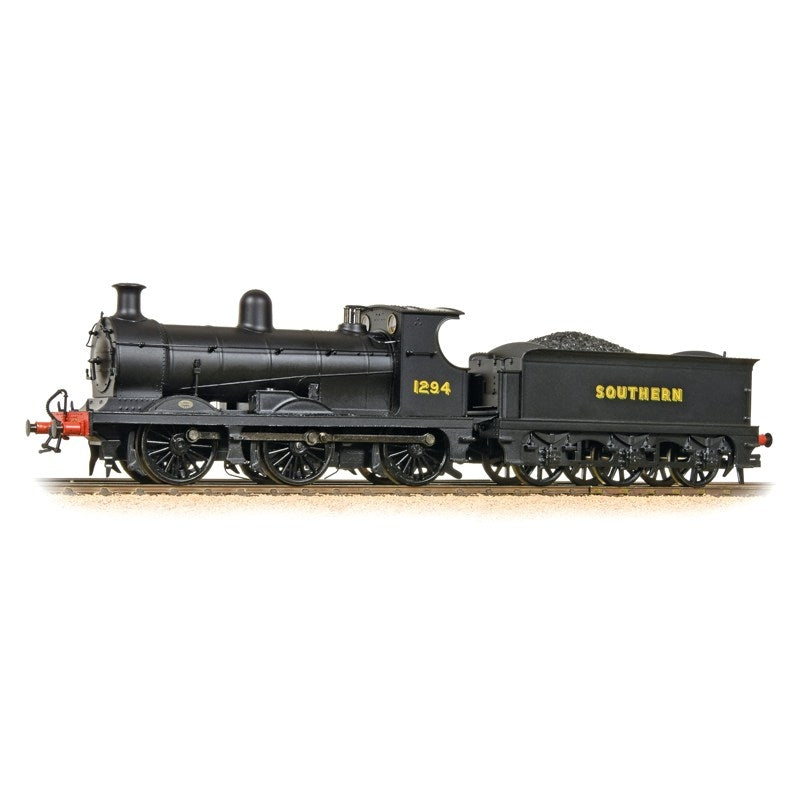
Steam Era Models L1 HO DERM Spoked Wheels/Plate Bogie/Rod Cowcatcher 1952-59 Kit
HO Scale Victorian Railways DERM Railcar Kits
Injection moulded polystyrene kits
Features
-
Available in a range of Victorian Railways prototypes, in HO scale only.
-
Kits are injection moulded from polystyrene, composite white metal/etched brass, or etched brass/lost wax brass castings and include instructions, decals, motors and wheels/bogies as appropriate.
-
Kits do NOT include paints, or couplers, which are available separately.
-
Wheels are to NMRA RP25 profile and HO gauge.

Phoenix Reproductions HO K190 Victorian Railways K Class Locomotive DCC Sound
The Victorian Railways built 53 K class engines at Newport Workshops over a 24 year period, commencing in 1922. The first series of 10 engines were progressively rebuilt in the 1940s to match the performance and visual appearance of the other class members. Later in 1946 the last 9 engines entered service, these engines had single cab side windows and the last 7 engines were fitted Boxpok style driving wheels.
They were extremely versatile engines and could be found and all classes of trains, many worked until the late 1960s and several into the early 1970s.
The Phoenix Reproductions model represents the class in it's later years of government service as well as several colourful liveries of early days preservation.
Features
- Highly detailed Ready-to-Run HO gauge model
- Diecast boiler, frame and footplate
- Genuine Kadee scale head whisker coupler (Tender)
- Separately applied boiler details
- Working LED lights
- All models come standard with an MTC 21 pin motherboard
- Keep Alive Circuit
- DCC version with LokSound V5 decoder
- 22" Minimum Radius
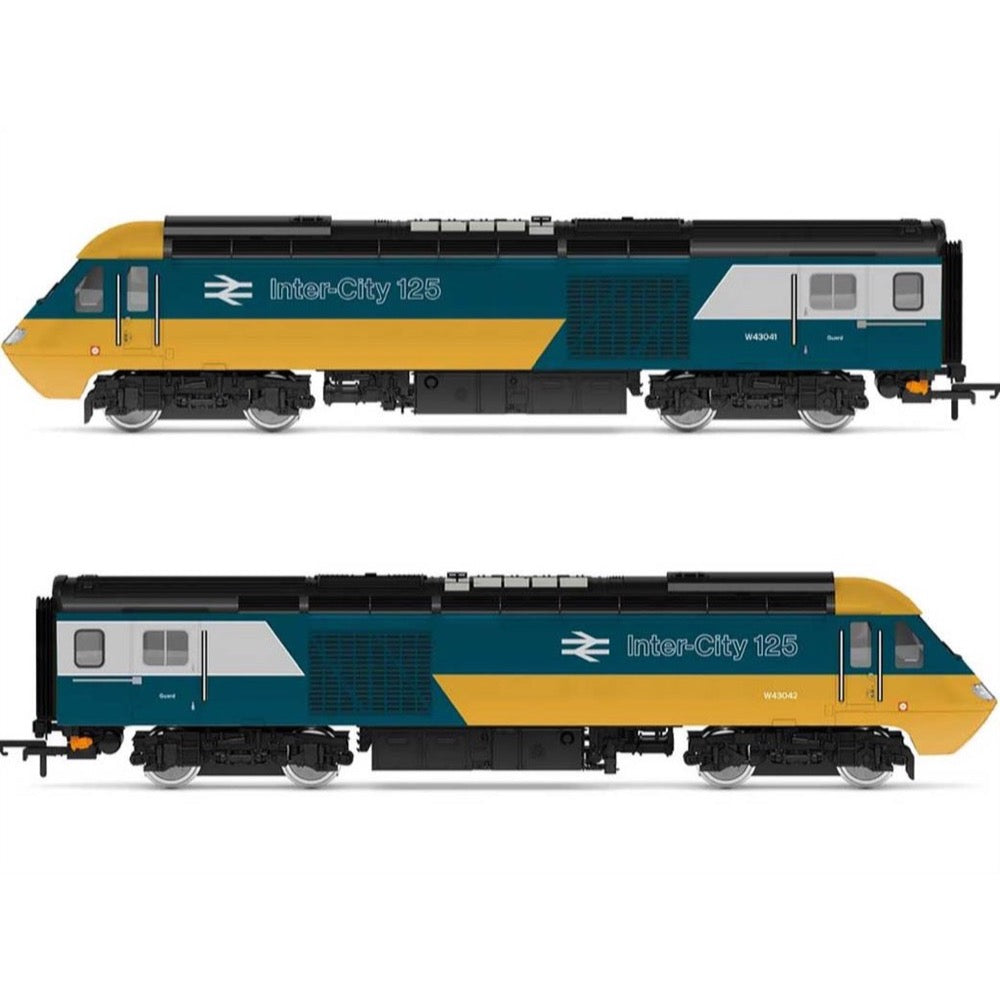
Hornby R30239 OO BR Class 43 HST Train Pack Era 7 Locomotive
Originally conceived as a cheaper, more reliable alternative to the Advanced Passenger Train in the early 1970s, the British Railways Board authorised the development of a prototype High Speed Diesel Train, with two locomotives designated as Class 41. These aerodynamic power cars were constructed by British Railways Engineering Ltd at their Crewe Works and emerged in June and August 1972, fitted with Paxman Valenta 12RP200L engines, developing 2,250 hp.
The power cars, having initially been numbered 41001 and 41002, were later given the coaching stock numbers 43000 and 43001 for operating trials on the Eastern Region and subsequent transfer to the Western Region. Following evaluation and a change of name to High Speed Train, British Rail placed orders for similar trains for use on the Western, Eastern, Scottish and London Midland Regions.
When originally built at BREL's Crewe Works, the InterCity 125 units were considered to be diesel multiple units and allocated as Class 253 to the Western Region and Class 254 for the Eastern Region. With the introduction of Trailer Guard Second (TGS) carriages, later power cars had no guard's equipment installed and by 1987 most power cars were simply classified as Driving Motor (DM), although they still had luggage van space, retaining a window by the luggage door on each side.
Following problems with the power cars and the operational ease of removing power cars to perform scheduled maintenance, unit formations were abandoned, resulting in the Class 43 locomotive prefix being adopted. The 197 Class 43 power cars produced between 1976 and 1982 were numbered 43002 to 43198 and are officially the fastest diesel units in the world. The units have an absolute maximum speed of 148mph (238kph), which is the current world diesel traction record, set on November 1, 1987.
In 1987, for trial purposes, eight of the Class 43s were converted for use as Driving Vehicles with the Class 89 and Class 91 locomotives. The power cars were fitted with buffers and Time Division Multiplex (TDM) equipment that allowed them to directly control the other locomotive.
Following the delivery of British Rail's Mk 4 coaching stock, the TDM equipment was removed and the power cars reverted to their normal duties, retaining their buffers. During the late 1990s, twenty-five of the Class 43s were updated with Paxman 12VP185L engines in an attempt to reduce fuel consumption and emissions; however these proved to be less reliable in service than was hoped.
No. 43141 was constructed at Crewe Works and entered service in April 1980 painted in a BR Blue and Grey ‘Inter-City 125’ livery. A W prefix was also added to the running number in its early days of service. As part of the HST set, 253036, this locomotive worked in the Western Region. The original Paxman-Valenta engine was replaced with an MTU 16V4000 R41 engine in August 2006 at Brush Traction. In December 2006, 43141 was outshopped and re-entered service under First Great Western, painted in a ‘Dynamic Lines’ livery.
From 2016 until 2018, the Class 43 locomotive carried a Welsh ‘Blwch Signalau Panel Caerdydd 1966-2016’ nameplate. It directly translates to Cardiff Panel Signal Box. This locomotive was sent to Scotland on 12th October 2018 and was assigned Edinburgh Haymarket as its depot. Its current operator is ScotRail and is painted in a ScotRail HST ‘Inter7City’ dark blue and pale grey livery with landmark decals.
No. 43142 was constructed at Crewe Works and entered service as part of the 253036 HST set. Like the locomotive, No. 43141, this car’s running number also had an incorporated W prefix and a BR Blue and Grey ‘Inter-City 125’ livery. The locomotive gained a ‘St. Mary’s Hospital Paddington’ nameplate in 1986 until it was removed in 1989.
In 2007, the locomotive was moved to Brush Traction to replace the Paxman-Valenta engine with an MTU engine. It re-entered service under First Great Western in a ‘Dynamic Lines’ livery. 2011 saw a ‘Reading Panel Signal Box 1965-2010’ nameplate be fitted to the locomotive. In 2019, this nameplate was removed due to the locomotive being moved to Scotland on 18th June 2018 to make way for a new operator. The current operator is ScotRail and is painted in a ScotRail HST ‘Inter7City’ dark blue and pale grey livery with landmark decals.
Upgraded for 2023, the Hornby Class 43 pack includes lights front and rear and well as motorised fans in the roof and a kinomatic coupling system. Fitted with a 5 pole motor and dual flywheels the motor car is all wheel drive. Both units are fitted with 21 pin DCC sockets and pre-fitted dual speakers which allow for the use of sound on DCC as well as offering greater control of the lights and fans.
Specification
- Item Length - Without Packaging (cm): 46
- Item Height - Without Packaging (cm): 5
- Item Width - Without Packaging (cm): 3.5
- Item Weight - Without Packaging: 0.72
- Item Scale: 1:76 Scale 00 Gauge
- Finish: Painted
- Colour: Blue and Grey
- Gauge: OO
- DCC Status: DCC Ready 21 pin socket
- Operator: BR
- Designer: Sir Kenneth Grange
- Wheel Configuration: Bo-Bo
- Livery: BR Blue and Grey
- Minimum Curve (mm): Radius 2
- Motor: 5 Pole Skew wound
- Number of Parts: 2
- Buffer Type: Sprung Metal Buffers
- Coupling Type: NEM Tension Lock
- Hornby Decoder Compatibility Primary: HM7000-21TXS: Bluetooth® & DCC Sound Decoder (21-pin)
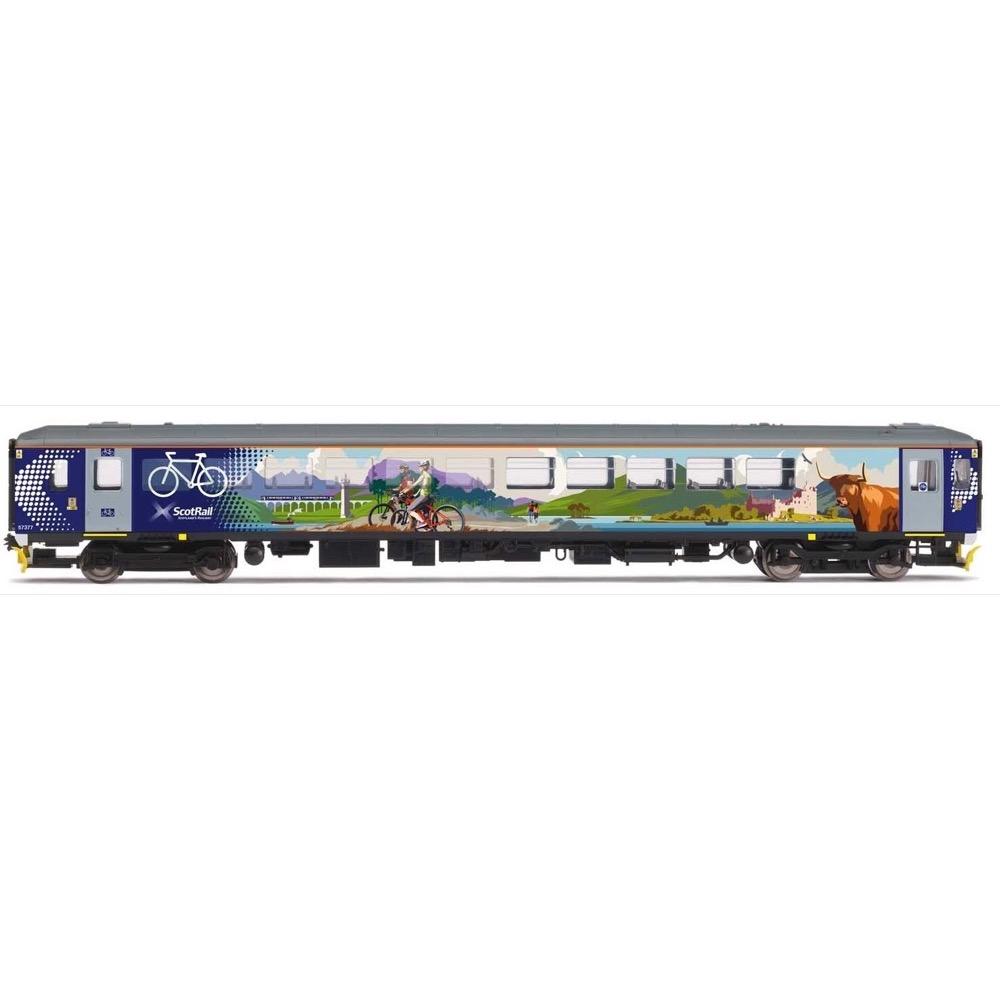
Hornby R30011 OO ScotRail Class 153 153377
The origins of the Class 153 date back to 1990, when British Rail needed replacements for its ageing fleet of Class 121 and 122 'Bubble Car' diesel railcars for use on the quiet Cornish, Welsh, North-Western, Norfolk and Lincolnshire branch lines, as well as augmenting rural two car units.
Originally built as a two-car Class 155 'Super Sprinter' by British Leyland between 1987 and 1988, using a construction technique similar to that used in the Pacers, pre-formed panels were riveted together, creating a lightweight body on a welded floor assembly. Introduction was rapid, but teething troubles with the door mechanisms soon emerged, consequently the fleet was taken out of use and modified, with the Class 156 units taking over the duties. The conversion to Class 153 was carried out by Hunslet-Barclay at Kilmarnock between 1991 and 1992, with 70 vehicles being produced. The layout of the original non-cab ends was different from the original cab end, so the ends are noticeably distinct with the vehicles not being symmetrical.
Powered by a 285hp Cummins NT855-R5 Diesel, working through a Voith Hydraulic transmission, the maximum speed of a Class 153 is 75 mph, making it perfectly suited for small cross-country services. They are fitted with standard BSI auto-couplers, allowing them to work in tandem with other multiple units from the 14X and 15X Classes fitted with the same coupler, as well as newer units like the Class 170. In 2019/2020, five former GWR 153s moved from Northern to Abellio ScotRail for use on the West Highland Line attached to Class 156s as 'active travel' carriages. These units have had their interiors heavily modified to carry up to 20 bicycles, along with large bags and sports equipment.
Specifications
- Item Length - Without Packaging (cm): 31
- Item Height - Without Packaging (cm): 5
- Item Width - Without Packaging (cm): 3.5
- Item Weight - Without Packaging: 0.35
- Item Scale: 1:76 Scale 00 Gauge
- License: Yes
- License line: The ScotRail trade marks are used with permission of the Scottish Ministers
- Finish: Painted
- Colour: Blue
- Gauge: OO
- DCC Status: DCC Ready 8 pin socket
- Operator: ScotRail
- Designer: Leyland Bus
- Wheel Configuration: 4-6-2
- Livery: ScotRail
- Minimum Curve (mm): Radius 2
- Motor: 5 Pole Skew wound
- Number of Parts: 1
- Class: Class 153

SDS Models NR543 HO NR76 The Overland Proposed NR Class Locomotive DCC Sound
Introduced in 1996 by National Rail Corporation these 120 units were built by A Goninan and Co. The locomotives are 3000kw General Electric powered and used on standard gauge Australia wide.
They were introduced in grey and marigold and several were painted into various business units of NRC. Later they wore GSR train liveries representing the Hook and Pull agreement between the two companies.
In 2002 Pacific National acquired the assets of NRC and commenced to repaint the NR class into their new blue and yellow colours.
The model features the current tooling from Austrains and includes operating headlights, marker and ditch lights and is Kadee equipped. These are an ideal way to add colour to your collection.
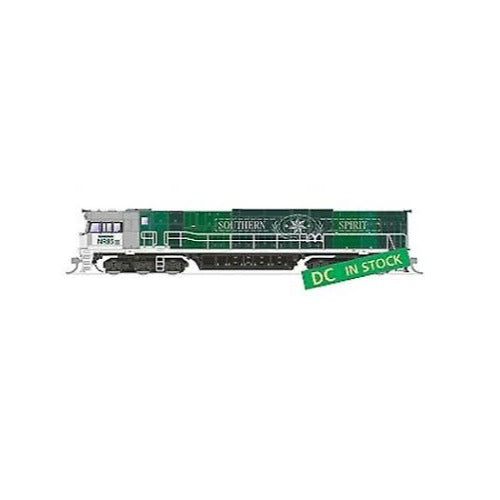
SDS Models HO NR84 Southern Spirit NR Class Locomotive
Model Features:
- Highly detailed Ready-to-Run HO gauge model
- Precisely tooled plastic body (ABS)
- Genuine Kadee scale head whisker coupler
- Separately applied handrails and detail parts
- 5-Pole skew wound electric motor and dual flywheels
- All wheel drive and electrical pickup
- LED headlights, marker lights, number boxes and ditch lights
- All models come standard with an MTC 21 pin motherboard
Photos shown are representative of the finished model. Numbers and colours may vary on final product.

Hornby R3835 OO BR Thompson Class A2/3 4-6-2 60523 Sun Castle BR Green Late Locomotive
60523 Sun Castle entered traffic at Kings Cross on 2 August 1947, spending less than a year on top line services before being allocated to Leeds' Copley Hill shed on 30 May 1948.
The Diagram 118 boiler was fitted after a Works visit in February/March 1958, by which time Sun Castle was back on the East Coast Main Line, variously allocated between New England, Grantham and Doncaster sheds.
Having served on general duties, 60523 was withdrawn from service on 16 June 1963 from New England shed.
Specification
- Item Length - Without Packaging (cm): 29.5
- Item Height - Without Packaging (cm): 5
- Item Width - Without Packaging (cm: 3.5
- Item Weight - Without Packaging: 0.36
- Item Scale: 1:76 Scale 00 Gauge
- License: No
- Finish: Painted
- Colour: Green
- Gauge: OO
- DCC Status: DCC Ready 8 pin socket
- Operator: British Railways
- Designer: Edward Thompson
- Wheel Configuration: 4-6-2
- Livery: Late Crest
- Minimum Curve (mm): Radius 2
- Motor: 5 Pole Skew wound
- Number of Parts: 1


